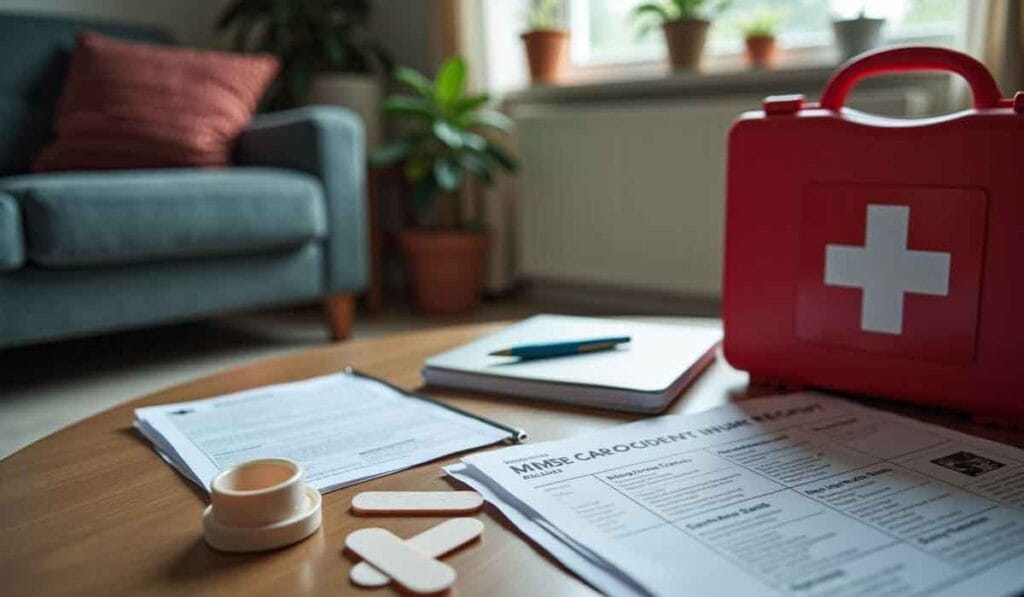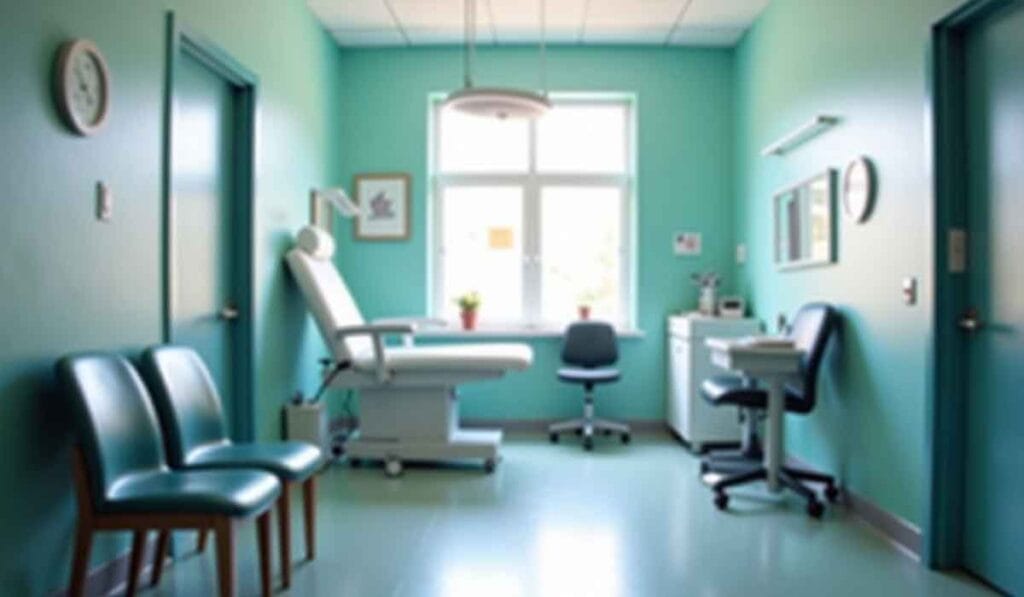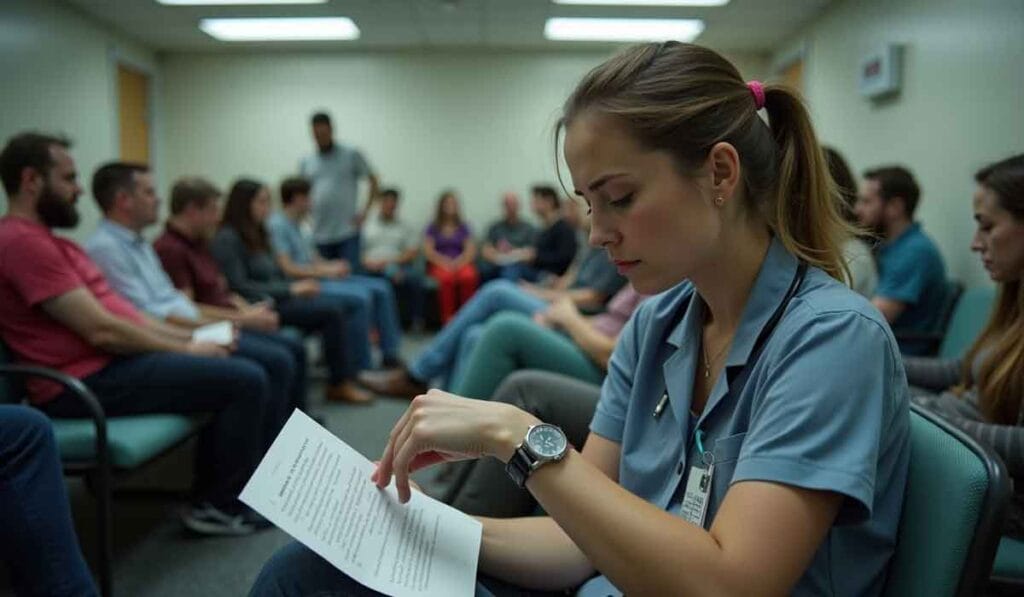Cómo elegir entre una sala de emergencias o atención de urgencia después de un accidente automovilístico
Obtener atención médica después de un accidente automovilístico puede ser confuso.
Quizás te preguntes si debes ir a un sala de emergencias o atención de urgencia.
Conociendo el Diferencias entre estas opciones Te ayuda a hacer el La mejor opción para tus lesiones.
Esta guía responde a sus preguntas de forma clara y sencilla.
Tenga en cuenta: Somos médicos de accidentes que le cobramos $0 de su bolsillo por la mejor atención médica después de un accidente automovilístico.
No se quede atrapado con grandes facturas médicas después de un accidente automovilístico.
Debería venir y recibir tratamiento por parte nuestra primero, y luego podremos recomendarle los mejores abogados de accidentes automovilísticos en Phoenix o Mesa.
Conclusiones clave
- Elija la sala de emergencias para Lesiones graves como hemorragia interna y conmociones cerebralesLa atención de urgencia funciona bien para cortes, contusiones y esguinces menores.
- Costos de ER: $1,200 – $3,000+. Costos de atención de urgencia:$100 – $500. El seguro suele cubrir más en casos de urgencias.
- En las salas de emergencias, los tiempos de espera son más largos (de 2 a 4 horas). Los centros de atención de urgencia tienen tiempos de espera más cortos (de 30 minutos a 1 hora).
- Utilice atención de urgencia para Evaluaciones rápidas y condiciones menos graves. Para ahorrar tiempo y dinero.
- Siempre Prioriza tu salud al decidir a dónde ir después de un accidente automovilístico.
Entendiendo las diferencias: Atención de urgencias vs. Sala de emergencias
Las salas de emergencia y los centros de atención de urgencias tienen propósitos diferentes. Los médicos de urgencias se ocupan de traumatismos graves, mientras que los centros de atención de urgencias se ocupan de lesiones menores.
Tipos de atención brindada

Por ejemplo, puede visitar un centro de atención de urgencia en caso de esguinces o laceraciones menores.
Los departamentos de emergencia brindan Atención médica inmediata para lesiones graves..
Abordan afecciones como hemorragias internas, fracturas de huesos y ataques cardíacos.
Si sospecha que ha sufrido una conmoción cerebral o tiene dificultad para respirar después de un accidente automovilístico, diríjase a la sala de emergencias de inmediato.
Condiciones típicas tratadas

Dirección de las clínicas de atención de urgencia lesiones que no ponen en peligro la vidaEstos incluyen cortes menores, moretones y esguinces.
Los médicos en dichas instalaciones pueden tratar pequeñas fracturas óseas y lesiones por latigazo cervical provocadas por accidentes automovilísticos.
Ellos actúan Evaluaciones médicas rápidas, lo que le permitirá volver al camino rápidamente.
Las salas de emergencia (ER) se centran en condiciones severas que necesitan atención inmediata.
En esta categoría entran los traumatismos graves, las quemaduras graves o las posibles lesiones internas.
Síntomas como pérdida de conciencia o malestar en el pecho señalan la necesidad de atención en urgencias de inmediato.
El tratamiento temprano puede prevenir complicaciones.
Cuándo elegir atención de urgencia después de un accidente automovilístico

Los centros de atención de urgencia son ideales para tratar lesiones menores después de un accidente automovilístico.
Recibirá atención inmediata para problemas como raspones y moretones sin los largos tiempos de espera de una sala de emergencias.
Lesiones que no ponen en peligro la vida
Las lesiones que no ponen en peligro la vida a menudo se pueden tratar en un centro de atención de urgencias.
Estas instalaciones atienden afecciones como cortes menores, moretones y esguinces resultantes de un accidente automovilístico.
También puede obtener evaluaciones médicas rápidas sin los largos tiempos de espera que se ven en las salas de emergencia (ER).
Los servicios de atención de urgencia cuentan con profesionales médicos que pueden proporcionar puntos de sutura para heridas menores y recetar medicamentos para el tratamiento del dolor o el control de infecciones.
También ofrecen pruebas de diagnóstico para detectar problemas menos graves, como fracturas o contusiones, que no requieren tratamiento de emergencia inmediato.
Quemaduras y heridas leves

Los accidentes de tráfico suelen provocar quemaduras y heridas leves. Los centros de atención de urgencias pueden tratarlas de forma eficaz.
El personal médico limpiará la herida para evitar infecciones. Es posible que le coloquen un vendaje o le receten un ungüento antibiótico.
El tratamiento rápido minimiza las cicatrices y acelera la curación. Una visita a un centro de atención de urgencias por lesiones menores ahorra tiempo y cuesta menos que la sala de emergencias.
Evaluaciones médicas rápidas

Centros de atención de urgencia oferta Evaluaciones médicas rápidas para lesiones que no ponen en peligro la vida.
Después de un accidente automovilístico, puede visitar un centro de atención de urgencia para problemas como quemaduras leves, raspones o hematomas.
Profesionales capacitados evaluarán su condición y brindarán el tratamiento necesario en el lugar.
Estas instalaciones suelen tener tiempos de espera más cortos En comparación con las salas de emergencia.
Esto significa un servicio más rápido al abordar enfermedades que no requieren asistencia médica de emergencia inmediata.
Buscar ayuda oportuna en estas situaciones garantiza una documentación adecuada para fines de seguros y reclamos por lesiones personales.
Cuándo optar por acudir a urgencias
Si siente un dolor intenso o sospecha que tiene lesiones internas, acuda directamente a urgencias. La atención de urgencia es fundamental si aparecen síntomas de conmoción cerebral u otras afecciones graves.
Lesiones graves que requieren atención inmediata.

Las lesiones graves exigen Atención inmediata en una sala de emergencias. Condiciones que ponen en peligro la vida, como lesión cerebral, pérdida de sangre severa, y los huesos rotos necesitan atención urgente por parte de cirujanos traumatólogos.
Los paramédicos o el personal de emergencia pueden utilizar ambulancias para transportar a los pacientes rápidamente para una intervención médica rápida.
Síntomas de heridas internas Son igualmente críticos. Los posibles signos incluyen presión arterial baja, desmayos o sangre en las heces.
Las salas de emergencia cuentan con el equipo necesario, como tomografías computarizadas, para diagnosticar estos problemas rápidamente.
Retrasar el tratamiento puede empeorar la situación o provocar complicaciones graves, como shock o insuficiencia orgánica. Busque siempre Atención inmediata en tales casos.
Posibles lesiones internas
Si siente dolor o hinchazón en el abdomen, es una señal de alerta.
El daño cerebral es otra preocupación. Síntomas como dolor de cabeza, náuseas o mareos pueden indicar un traumatismo cerebral.
Acuda a una sala de emergencias si nota estos síntomas. Una acción rápida puede prevenir daños a largo plazo y ayudar a recuperarse más rápido de los accidentes automovilísticos.
Síntomas de conmoción cerebral u otras afecciones graves

Síntomas de conmoción cerebral Puede presentarse en diversas formas. Puede sentirse mareado o tener dolores de cabeza.
Los vómitos y las náuseas también son síntomas habituales. También pueden presentarse confusión o pérdida de memoria después de una colisión automovilística.
Otras enfermedades graves presentan síntomas diferentes. Por ejemplo, las lesiones internas pueden causar Dolor abdominal intenso o dificultad para respirar.La sangre en la orina podría indicar daño orgánico.
Busque siempre atención médica para estos síntomas para garantizar un tratamiento adecuado en caso de accidente automovilístico.
Consideraciones sobre costos y tiempos de espera
Comparar el costo y los tiempos de espera entre una sala de emergencias y una atención de urgencia puede ayudarle a decidir qué opción es mejor después de un accidente.
Comparación de costos entre urgencias y atención de urgencia

El costo juega un papel crucial a la hora de decidir entre una sala de emergencias (ER) y atención de urgencia después de un accidente automovilístico.
He aquí una visión comparativa.
| Servicio | Costo promedio |
|---|---|
| Sala de emergencias (ER) | $1,200 – $3,000+ |
| Atención de urgencias | $100 – $500 |
– Las visitas a urgencias suelen ser más caras.
– Atención de urgencias es más económico.
– El seguro puede cubrir una porción mayor de los costos de atención de urgencia.
– ER presta servicios especializados, lo que justifica mayores costos.
– Es posible que encuentre tarifas ocultas en las facturas de ER.
Tiempos de espera previstos
Al pasar de una comparación de costos, es fundamental comprender la tiempos de espera esperados para recibir atención médica después de un accidente automovilístico.
El tiempo de espera para recibir tratamiento puede variar significativamente entre una sala de emergencias y una atención de urgencia.
| Instalación | Tiempo de espera promedio | Factores que afectan el tiempo de espera |
|---|---|---|
| Sala de emergencia | 2-4 horas | Gravedad de otros casos, capacidad hospitalaria, hora del día |
| Atención de urgencias | 30 minutos – 1 hora | Número de pacientes, niveles de personal, hora del día |
En las salas de emergencia, el tiempo de espera a menudo depende de la gravedad de las condiciones de otros pacientes.
Los casos de alta prioridad tienen prioridad. La capacidad del hospital y el momento del día en que lo visite también pueden afectar el tiempo de espera.
Los centros de atención de urgencia suelen tener tiempos de espera más cortos. Factores como la cantidad de pacientes, el personal y la hora del día afectan estas esperas.
Generalmente puede esperar un servicio más rápido para lesiones que no ponen en peligro la vida.
Comprender estas diferencias le ayudará a determinar la mejor opción para sus necesidades médicas después del accidente.
Conclusión

La elección entre una sala de emergencias y atención de urgencia después de un accidente automovilístico depende de sus lesiones.
Para trauma severo o posibles problemas internos, acuda a urgencias de inmediato. La atención de urgencia es la mejor para heridas menores que necesitan un tratamiento rápido.
Tenga siempre en cuenta también el coste y los tiempos de espera. Su salud debe ser lo primero en cada decisión que tome.
preguntas frecuentes
1. ¿Cuándo debo acudir a urgencias después de un accidente automovilístico?
Acuda a urgencias si tiene lesiones graves, como traumatismo craneoencefálico, lesiones en la cabeza o lesiones en la espalda, como hernias discales. Las salas de urgencias están equipadas para realizar cirugías inmediatas y atender afecciones médicas complejas.
2. ¿Qué tipos de lesiones se pueden tratar en atención de urgencia después de un accidente?
Los centros de atención de urgencias se ocupan de lesiones menores y exámenes físicos. Pueden tratar dolores de espalda menos graves, cortes que requieren puntos de sutura pero no cirugía y otras afecciones que no ponen en riesgo la vida.
3. ¿Cómo afecta el seguro médico mi decisión entre una sala de emergencias y atención de urgencia?
Las pólizas de seguro médico suelen cubrir ambas opciones, pero con copagos diferentes. Revise su plan de protección contra lesiones personales para comprender qué cubre cada tipo de centro.
4. ¿Puedo consultar a mi médico de atención primaria después de un accidente automovilístico en lugar de ir a urgencias o sala de emergencias?
Sí, si sus lesiones son menores, consultar a su médico de atención primaria o utilizar la telemedicina podría ser suficiente para las visitas de seguimiento o el control continuo de la enfermedad.
5. ¿Debo consultar con abogados especializados en lesiones personales después de visitar una sala de emergencias o un centro de atención de urgencia?
Consultar a abogados especializados en lesiones personales puede ayudarle a entender la legislación sobre lesiones personales relacionada con accidentes y demandas por agravios colectivos. Ofrecen asesoramiento sobre los pasos legales posteriores al tratamiento de cualquier afección médica resultante de accidentes.

